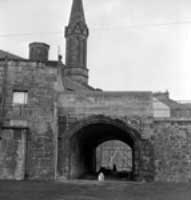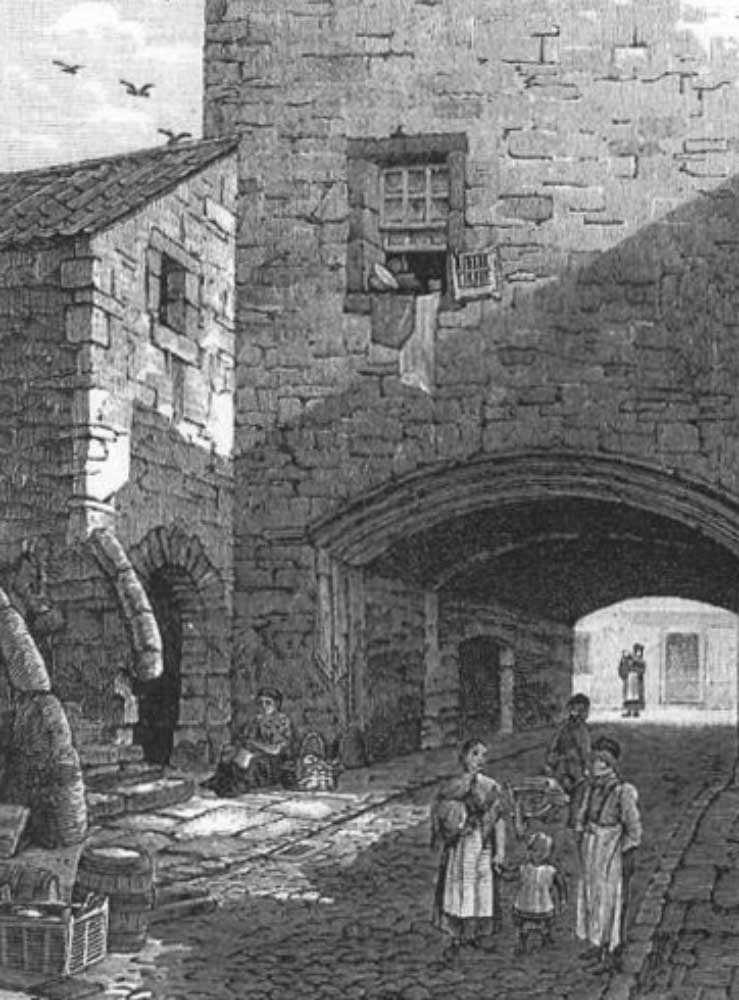The Citadel

In the 1650s Scotland was ruled by Oliver Cromwell’s London-based government. Leith was occupied by a Cromwellian army commanded by General Monck, following a heavy defeat at Dunbar. He decided to strengthen the defences of Leith and at one stage proposed to surround the entire town with fortications. This alarmed the Town Council of Edinburgh who offered £5,000 towards the cost of building a Citadel instead.
The Citadel was built in North Leith at a cost of £100,000 Sterling — an enormous amount at the time. Following the restoration of the monarchy in 1660, most of these new and expensive fortications were demolished. The site was briefly used for industrial purposes and one of the first genuinely Scottish newspapers, the Mercurious Caledonius, was produced here. The Citadel also became a fashionable place in which to live.
Cromwell marched on Scotland determined to bring her back into the Commonwealth. Without going too deeply into the history of the period, we know the Scots were defeated and Cromwell entered Edinburgh and Leith.
In Leith, General Monck, who was Cromwell’s officer in charge Scotland closed the churches. He used the St James’ Hospital, the vaults under Trinity House and the old St Anthony’s Hospice for munitions stores. South Leith Church became stables for the horses and a store for the artillery. The expelled congregations had to worship where they could.

In good weather this was on the links. Monck was very wary of such large gatherings so near his powder magazines - he needed a fortification to be built.
The Citadel built in North Leith by Monck was a large pentagonal construction with walls faced with hewn stone. It had five bastions, with barracks and stone building for magazines and stores and also houses for the governor and officers. It is hard for us today to realise the size as only one gate, or port, remains on the west side of Dock Street, but the area covered was Dock Street, Coburg Street, Cooper Street, then following the line of the old 1560 fortifications to what is now Commercial Street.
In building the Citadel Monck destroyed the Old Hospice and church of St Nicholas as well as the burial ground of North Leith Parish Church - St Ninians - and there is no doubt that he used the stone from the Old Hospice to build his new Citadel.

Accounts vary as to the cost of the building but certainly Edinburgh paid part of the cost to enable them to keep the superiority over Leith. After the restoration Edinburgh had to buy the Citadel back from the Earl of Lauderdale who had been given it by the King as a reward for his support. Again this was so that Edinburgh could keep its grip over Leith.
Edinburgh demolished and sold parts of the Citadel and the rest was left to rot and fall into disrepair. This happened quickly as the wall facing what is now Commercial Street was on the edge of the beach known as the ‘Short Sands’ and there are stories of ships being driven against the walls during storms. Three of the bastions and two of the gates were still standing at the time of the ‘Statistical Account’ in 1793.
From the records of Heriot’s Hospital, the town council, on 7th April 1673 unanimously “understood that the Kirk of the Citadel and all that is therein be made use of to best avail for the reparation of the Hospital Chapel and ordained the Treasurer of the Hospital Chapel to see the same was done with all conveniency”. This was the church within the Citadel in which the parliamentarians had worshipped and was called St Nicholas.
This illustration shows a late 19th century engraving of the Citadel Port – the main gateway. The house on top of the gate was later demolished and the stone arch in Dock Street is all that remains to remind us of the Citadel.